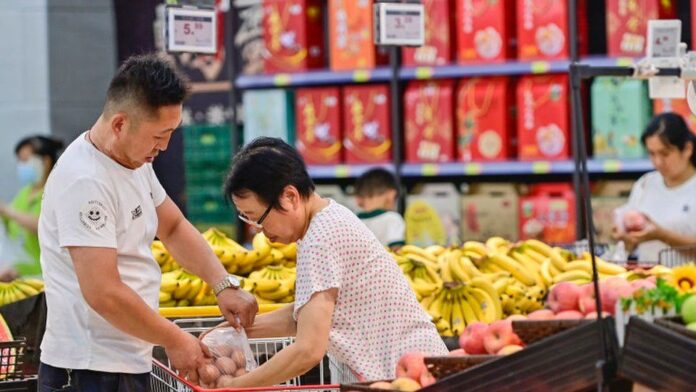In a surprising turn of events, China’s economic trajectory has taken a somber dip as deflationary pressures grip the nation’s financial fabric. July marked the first instance in over two years where consumer prices saw a decline, signaling potential challenges lying ahead for the world’s second-largest economy. The official consumer price index fell by 0.3% compared to the previous year, presenting a quandary that beckons the Chinese government’s intervention to reignite demand.
This downward slide follows a series of concerns, including lackluster import and export figures that have cast shadows over China’s post-pandemic resurgence. Amidst these economic ripples, the nation grapples with multiple issues, such as burgeoning local government debt, housing market dynamics, and the specter of ballooning youth unemployment. A surge of approximately 11.58 million fresh graduates entering the job market has intensified the scrutiny on China’s ability to provide meaningful employment opportunities.
The intricate dance of these factors complicates China’s efforts to address its mounting debt. With deflationary winds blowing, the task of reducing debt becomes even more arduous, amplifying the conundrum of slower growth. Respected voices in the financial realm like Daniel Murray of EFG Asset Management advocate for a blend of fiscal strategies: bolstered government spending, tax adjustments, and a lenient monetary policy.
China’s divergence from the global trend is palpable. Unlike many developed economies that experienced a surge in consumer spending post-pandemic, China’s prices didn’t surge as the country emerged from stringent COVID-19 restrictions. While much of the world rejoiced in newfound spending freedom, China’s consumer prices have been teetering on the precipice of deflation for some time. Weak demand contributed to this price stagnation, a picture exacerbated by the parallel slide of factory gate prices.

Alicia Garcia-Herrero, an adjunct professor at Hong Kong University of Science and Technology, describes this scenario as “worrisome,” accentuating the contrast between China’s economic rhythm and the awakening Western world. The implications of deflation are profound: heavier debt burdens, diminished corporate profits, and constrained consumer spending. A domino effect could follow, ushering in unemployment and contracting demand in the world’s largest marketplace for energy, raw materials, and food.
As China grapples with these economic crosscurrents, it’s evident that its economic hurdles extend beyond deflation. The pandemic recovery has been sluggish, with recent trade data portraying a 14.5% drop in exports and a 12.4% plunge in imports. These figures reverberate concerns that China’s economic revival might trail projections. The precarious state of the property market further complicates matters, with Evergrande’s near-collapse serving as a stark reminder of potential pitfalls.
Amid the complexity, China seeks a path toward economic rejuvenation. Key to this journey is restoring confidence among investors and consumers. Eswar Prasad, a trade policy and economics professor at Cornell University, underscores this necessity, highlighting the need to stimulate private sector activity. The resumption of spending and investment hinges on instilling confidence, an endeavor that could necessitate significant stimulus measures and strategic tax cuts.
China stands at a pivotal juncture, facing not only the immediate challenge of deflation but also an intricate web of economic concerns. The nation’s ability to recalibrate its economic engine, stimulate demand, and regain investor trust will determine whether it can orchestrate a resurgence worthy of its global standing.


